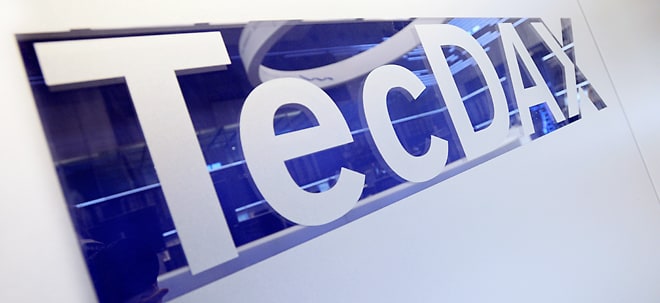Petrobras Hits 2024 Production Targets - Is the Stock a Buy?
Werte in diesem Artikel
Brazilian energy major Petroleo Brasileiro S.A., or Petrobras PBR recently announced that it successfully met its oil and gas production targets for 2024, despite facing significant operational challenges. The company reported an annual production of 2.7 million barrels of oil equivalent per day (MMBOE/d), with commercial production reaching 2.4 MMBOE/d and oil production standing at 2.2 million barrels per day. Additionally, proven reserves climbed to 11.4 billion barrels of oil equivalent, a 4.5% increase from 2023, reflecting strong asset performance and successful reserve replacement.These achievements highlight Petrobras’ operational strength, but its stock tells a different story. Despite robust financials and an attractive valuation, PBR has declined nearly 19% over the past year. The Zacks Consensus Estimate for its 2025 earnings has also been revised downward, signaling caution. With these mixed signals, is Petrobras stock a buying opportunity or a value trap? Image Source: Zacks Investment ResearchUndervaluation Compared to Western MajorsPetrobras currently trades at a significant discount relative to its U.S. and European counterparts. The stock’s forward 12-month Price/Earnings ratio stands at just 4.62, far below those of Western oil majors like ExxonMobil XOM and Shell SHEL, which trade at multiples around 10x.This steep undervaluation — confirmed by a Zacks Value Score of A — is primarily due to investor concerns over political risks, government intervention, and macroeconomic instability in Brazil. However, from a fundamental perspective, Petrobras' valuation presents a compelling case for long-term investors seeking exposure to high free cash flow, low production costs, and strong reserve growth. If sentiment shifts or risks subside, PBR could see significant upside.PBR, XOM, SHEL P/E F12M Image Source: Zacks Investment ResearchProduction Growth at Low CostsPetrobras is aggressively expanding production, particularly in pre-salt fields, which accounted for more than 80% of total output in 2024. These assets are highly productive and cost-efficient, enabling the company to maintain a breakeven price of under $50 per barrel, significantly lower than many U.S. shale producers.The company has also launched major Floating Production Storage and Offloading platforms, including Maria Quitéria and Marechal Duque de Caxias, ahead of schedule. These projects have helped offset declines in mature fields, regulatory-imposed shutdowns, and operational disruptions.With $77 billion allocated to upstream exploration and production between 2025 and 2029, Petrobras is doubling down on its most profitable operations. This strategic focus should support continued production growth while maintaining industry-leading margins.Strong Cash Flow and Shareholder ReturnsDespite commodity price volatility, Petrobras continues to generate substantial free cash flow. In the July-September period, PBR company generated a positive free cash flow for the 38th consecutive quarter, with the metric coming in at $6.9 billion, more than enough to cover dividends, capex and debt repayments. The company has also reduced long-term debt, with a debt-to-capital ratio of 41.5 from more than 50 in 2020, improving financial flexibility.One of the biggest attractions of PBR stock is its high dividend yield. The company follows a variable dividend model, distributing 45% of free cash flow to shareholders. Currently, PBR’s dividend yield stands at more than 10%, far higher than industry peers. While payouts fluctuate based on earnings, Petrobras remains one of the most attractive income plays in the energy sector.Challenges: Political Risks and Government InfluenceDespite strong fundamentals, Petrobras faces significant political risks. The Brazilian government owns half of the company, which exposes it to policy-driven decisions that may not align with shareholder interests. President Lula's administration has already voiced concerns about large dividend payouts, advocating for increased reinvestment into state-backed projects, including lower-return renewables.Additionally, Petrobras recently shifted its pricing strategy, moving away from international benchmark-based pricing to a more discretionary "commercial strategy." This raises concerns about potential government interference in price-setting, especially in volatile oil markets. If global prices decline, Petrobras may be forced to absorb losses rather than passing costs onto consumers, impacting margins.Price Volatility, Currency Weakness and Earnings ConcernsPetrobras remains highly dependent on crude oil prices, which have faced increased uncertainty. Investors should know that fluctuating realizations impact revenues despite strong operational performance. Looking ahead, the U.S. Energy Information Administration (EIA) projects a flat-to-slightly declining WTI crude price in 2025, suggesting limited upside from pricing improvements.As a Brazil-based company, Petrobras is also vulnerable to currency fluctuations. The Brazilian real remains undervalued against the U.S. dollar, and further depreciation could negatively impact Petrobras' ADRs, which trade in USD.Moreover, Petrobras’ EPS expectations have been revised downward, contributing to weaker stock sentiment. Over the past 60 days, the Zacks Consensus Estimate for 2025 earnings has declined, signaling potential earnings pressure. Image Source: Zacks Investment ResearchConclusion: A Balanced Investment CasePetrobras presents a mixed investment outlook. On one hand, the company boasts of undeniably strong fundamentals — growing production, low breakeven costs, solid cash flow and an attractive valuation compared to peers. Its double-digit dividend yield and aggressive upstream investments make it an appealing play for long-term investors seeking value and income.On the other hand, political risks, government intervention, oil price volatility, and macroeconomic uncertainties continue to weigh on sentiment. The stock's significant decline over the past year reflects these concerns, and the recent downward earnings revisions indicate further challenges ahead.While its valuation and cash flow strength provide downside protection, political and market risks could limit upside potential in the near term. Investors should closely monitor oil prices, currency trends, and regulatory developments before making a more aggressive move. For now, Petrobras stock remains a Zacks Rank #3 (Hold). You can see the complete list of today’s Zacks #1 Rank (Strong Buy) stocks here.5 Stocks Set to DoubleEach was handpicked by a Zacks expert as the #1 favorite stock to gain +100% or more in 2024. While not all picks can be winners, previous recommendations have soared +143.0%, +175.9%, +498.3% and +673.0%.Most of the stocks in this report are flying under Wall Street radar, which provides a great opportunity to get in on the ground floor.Today, See These 5 Potential Home Runs >>Want the latest recommendations from Zacks Investment Research? Today, you can download 7 Best Stocks for the Next 30 Days. Click to get this free report Exxon Mobil Corporation (XOM): Free Stock Analysis Report Petroleo Brasileiro S.A.- Petrobras (PBR): Free Stock Analysis Report Shell PLC Unsponsored ADR (SHEL): Free Stock Analysis ReportTo read this article on Zacks.com click here.Zacks Investment ResearchWeiter zum vollständigen Artikel bei Zacks
Ausgewählte Hebelprodukte auf Petrobras
Mit Knock-outs können spekulative Anleger überproportional an Kursbewegungen partizipieren. Wählen Sie einfach den gewünschten Hebel und wir zeigen Ihnen passende Open-End Produkte auf Petrobras
Der Hebel muss zwischen 2 und 20 liegen
| Name | Hebel | KO | Emittent |
|---|
| Name | Hebel | KO | Emittent |
|---|
Quelle: Zacks
Nachrichten zu Petrobras SA (Petroleo Brasileiro)
Analysen zu Petrobras SA (Petroleo Brasileiro)
Keine Analysen gefunden.

